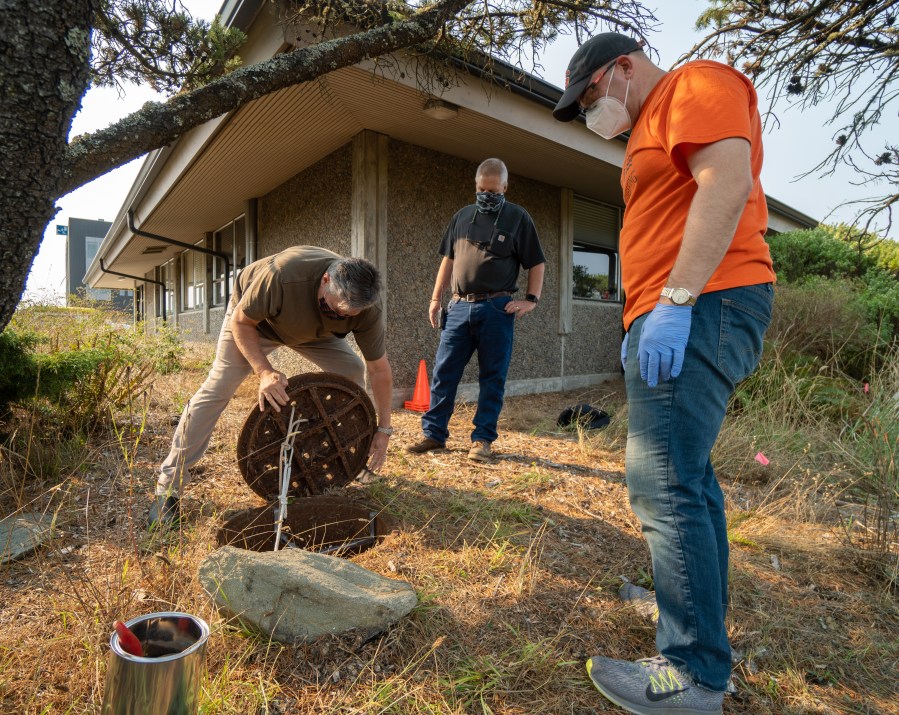PORTLAND, Ore. (KOIN) — Nearly 7% of Oregonians have received the COVID-19 vaccine and case rates in the state are trending down, just as new strains of the virus continue to crop up in various counties.
Oregon Health Authority Director Patrick Allen and State Epidemiologist Dr. Dean Sidelinger held a press conference on Friday morning to discuss projections and the COVID variants in Oregon.
The rate of new COVID-19 cases in the state has slackened, Sidelinger said.
“It is evidence of our collective effort paying off,” he said. He warned that the new strains of the virus are in Oregon and we must still take proper precautions.
Oregon State University’s Center for Genome Research and Biocomputing has been conducting tests on wastewater to detect for the variants. They have detected multiple variants of the SARS-CoV-2 virus that causes COVID-19 in samples from around the state, including the highly contagious U.K. strain in one sample from Bend.
They have been focused on identifying the variants from the U.K, South Africa and Brazil. Those three variants have a mutation in the virus’ spike protein that may allow individual particles of the virus to latch onto a person’s cells more effectively.
Five people tested on OSU’s Corvallis campus were positive for the “L452R” mutant strain of COVID-19. The strain was also present in campus wastewater samples.
“This strain is not of the highest concern, like those other three (U.K, South African and Brazilian variants), but it has spread extensively in Southern California and was associated with some recent large outbreaks in Santa Clara County,” said Brett Tyler, director of the genome center.
Vaccines in Oregon
Allen discussed the distribution of vaccines across the state, saying 6.8% of Oregonians have gotten the shot. Oregon ranks 15th in nation.
“If we receive more vaccines, we can vaccinate more people. Every day, Oregon Health Authority teams are doing everything we can to open more vaccine distribution channels,” Allen said.

On Thursday, the state’s Vaccine Advisory Committee released their recommendation for which groups get the vaccine next. It includes adults aged 16 to 64 with underlying health conditions, front-line workers who have been working through the pandemic and cannot work from home, adults and youth in custody who are 16 and older, and people living in low-income and congregate senior housing. Following those groups, the committee recommends people who live in multi-generational households, followed by the general public.
The initial group includes approximately 1 million people and vaccine supply is limited.
Vaccinating students?
Educators started to receive the vaccine this week after Governor Kate Brown decided to concentrate efforts on reopening schools before inoculating older populations. KOIN 6 News asked Brown her thoughts on vaccinating high schoolers 16 and older who are eligible for the Pfizer vaccine before they go back to school.
“It’s certainly worth taking a look at but what I would say is this: the CDC guidelines are really clear — we can return to in-person learning, the risk of transmission is low as long as we follow safety protocols,” Brown said.
Oregon entered Phase 1B of its vaccination rollout on Monday. Currently, this includes only educators and other school staff, of which there are an estimated 105,000 people. People 80 and older will be eligible for the vaccine starting Feb. 7, followed by people 75 and older, then those 70 and older. People 65 and older won’t be eligible until the week of Feb. 28. With nearly 800,000 people who are 65 and older in Oregon, the state estimates it won’t complete Phase 1B until the end of April at the earliest. Some counties have already finished vaccinating groups in Phase 1A and have moved on to seniors.
Mass vaccination clinics are open in Portland and Salem but others in some counties have been cancelled as a result of Brown’s decision to move thousands of doses to counties still trying to vaccinate healthcare workers.
OHA on Friday released new guidance about indoor activities in Extreme Risk Counties. The guidance allows for 6 people inside facilities over 500 square feet, with a time limit of 45 minutes. The guidance also has requirements for distancing, cleaning, locker rooms and contact tracing.
